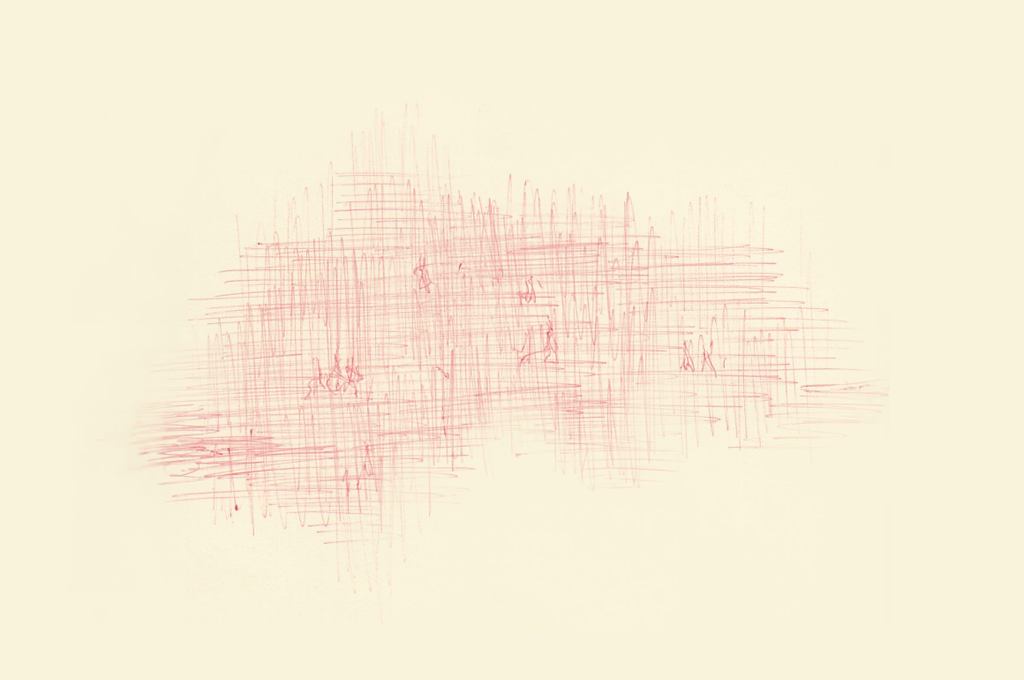Everyone seems to love each edition of the Serpentine Pavilion, and this year Sou Fujimoto's delicate but striking structure has impressed many. Ellie Duffy goes beyond the pleasing form to ask what the role of architectural follies might be in an age of austerity - not to mention less-than-satisfactory weather...
After a spectacularly cold and long winter in London, the 2013 Serpentine Pavilion was unveiled last week to coincide with the first real sunshine and warmth of the year in the city. This year a fractal-like pavilion designed by Japanese architect Sou Fujimoto dazzles white and ethereal in the morning sun against a vivid backdrop of Hyde Park’s early summer greenness.
What Fujimoto has done at the Serpentine is to impose a grid upon the natural world so that we notice it: welded steel sections, painted white and extending in billowing, boundless climbing frame configurations from the earth to the sky. The grid is intricate, human-sized, so that from some angles the intermeshing of steel-framed cubes receding in perspective creates a dense, almost solid, impression while at other vantage points it is the spaces in-between that figure.
‘Cloud-like’ was the phrase of choice to describe the project pre-realisation but in reality the structure rather hugs the ground plane, and is perhaps more evocative of the frozen moment of a swarm of insects or a flock of birds swooping low to the earth. The open grid is hollowed out internally to create a theatre-like volume within which stepped areas for sitting – or climbing – have been created by infilling horizontal surfaces of the steel frames with toughened glass. The polycarbonate discs that have been suspended in overlapping formation to create a roof of sorts seem something of an afterthought. It will be interesting to see what happens when it rains. Functionally, at least, this pavilion is undoubtedly one of the more nebulous of the series.
Overall the pavilion is both charming and conceptually valid: a thoughtful play on the interaction of digital and natural realities in the 21st century. It possesses the delightful characteristic of making the observer feel at the centre of the universe. As a viewer looking through and beyond the three-dimensional grid, all perspective emanates from your vision, the natural world is arranged sublimely so that you are at its centre, views of tree canopies and sky are framed for you alone, by your eyes.
The weather on the streets may have improved in London in recent weeks but the economic forecast remains uncertain. Despite the much-reported surge of high net worth types into the capital in recent years, ordinary Londoners – architects, say – remain highly austerity aware, conscious of wave after wave of cuts to public sector budgets that have yet to make their impact in areas such as health, housing and education.
Perhaps not surprisingly much of the discourse in architecture here at the moment relates to these pressing social concerns: what can be done, for instance, about the chronic dearth of affordable housing, let alone subsidised housing, in the capital? What can be done about the demise of high streets across the UK, the victims of out-of-town shopping malls, leaving hollowed-out impoverished communities? Increasingly, it seems, architects here are questioning at a fairly fundamental level the economics and policies around development. In this context it inevitably becomes a little more difficult to fully engage with the conceptual experiments going on at the Serpentine Pavilion: it has no roof, it provides little shelter from the elements, what is it for? It is a shame that the delicate and subtle thinking behind Fujimoto’s pavilion is somewhat drowned out by the clamouring of blunt realities in this economic climate.
– Ellie Duffy is a director of Duffy, London.
The 2013 Serpentine Gallery Pavilion from maxedmedia on Vimeo.





